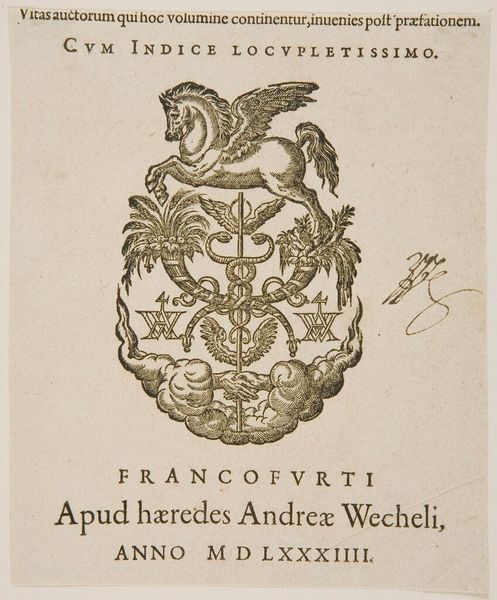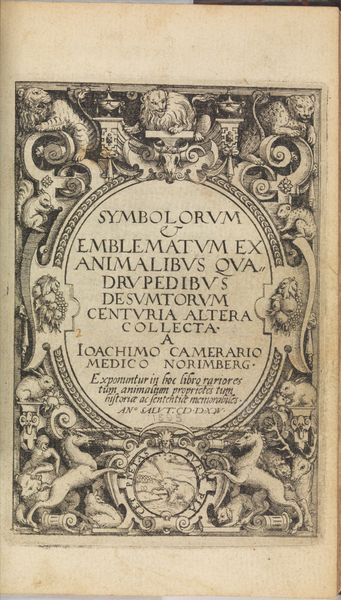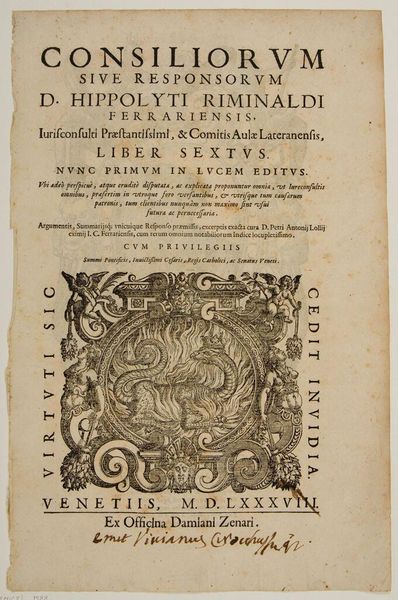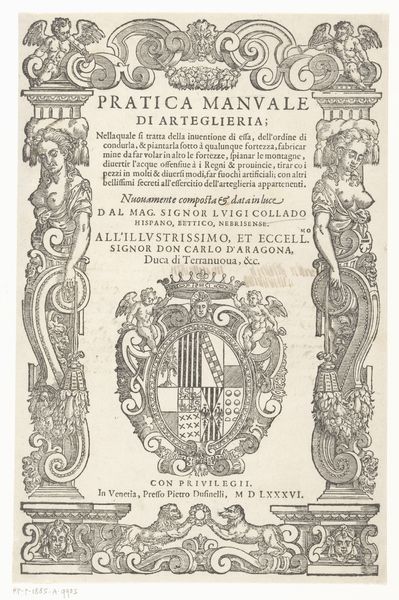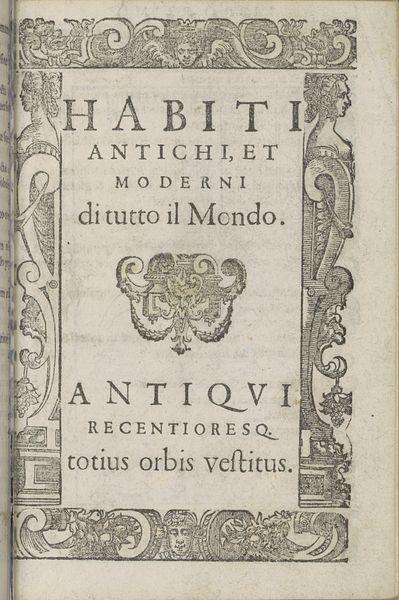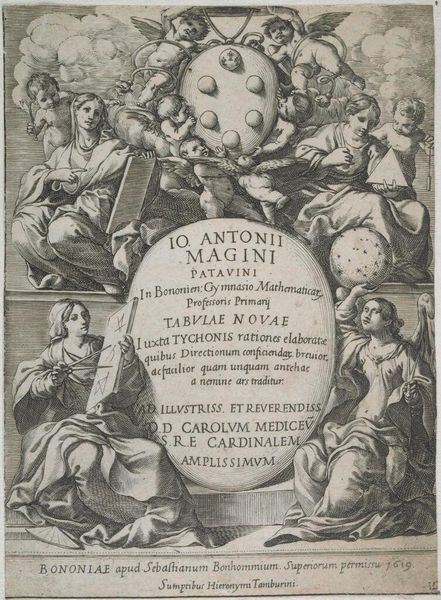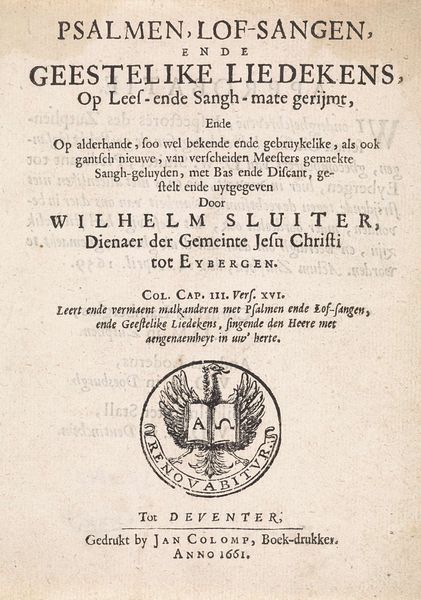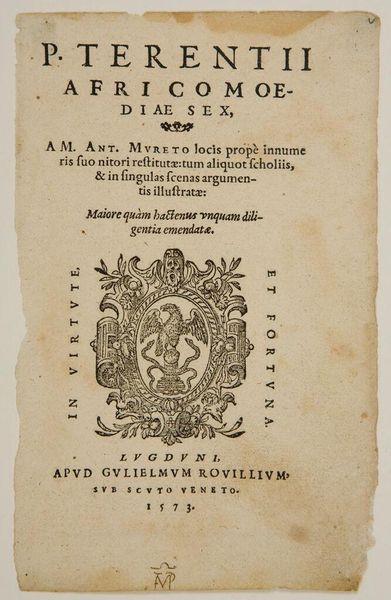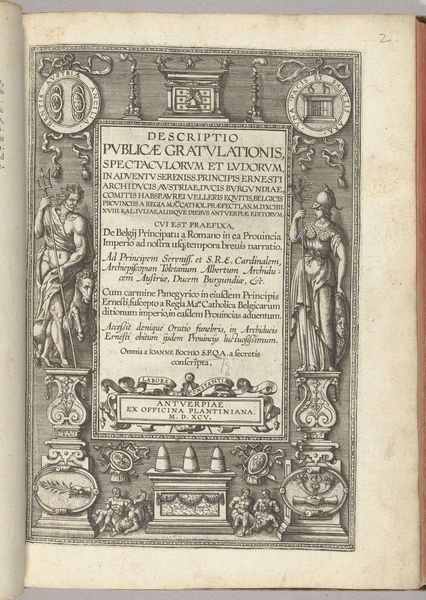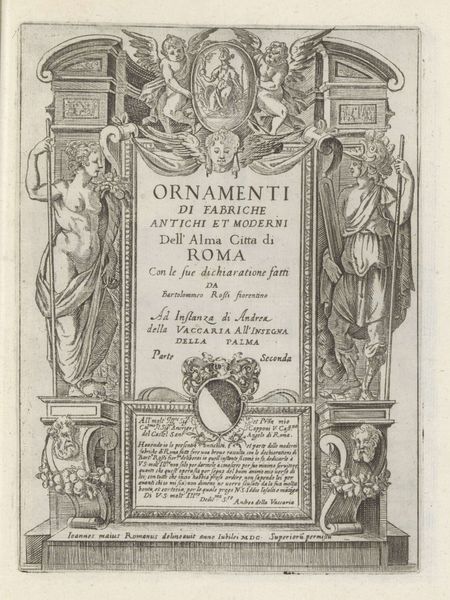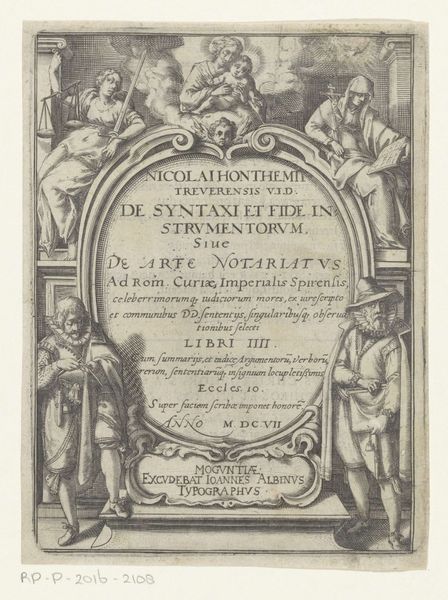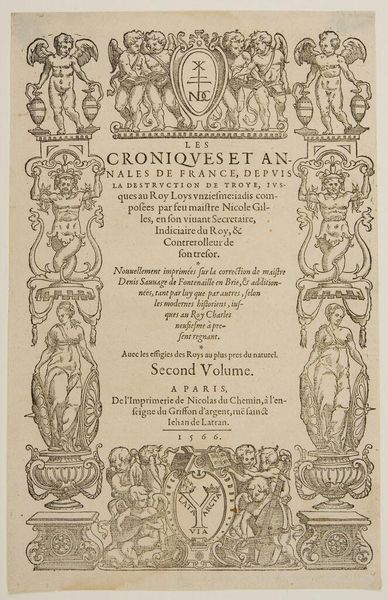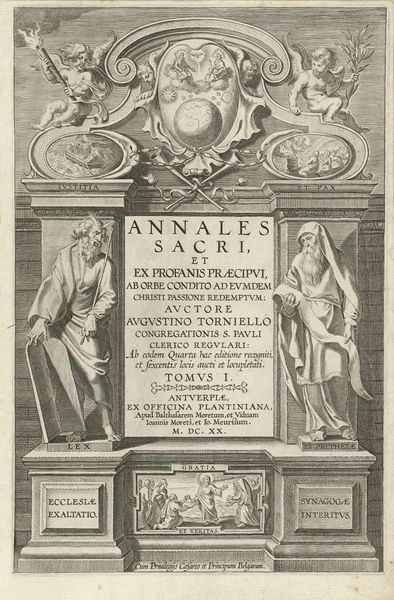
Habiti antichi, et moderni di tutto il mondo : di nuovo accresciuti di molte figure : vestitus antiquorum, recentiorumque totius orbis 1598
0:00
0:00
print, etching, engraving
#
medieval
#
pen drawing
# print
#
etching
#
engraving
Dimensions: height 167 mm, width 125 mm
Copyright: Rijks Museum: Open Domain
Editor: This is the title page to "Habiti antichi et moderni di tutto il mondo", or "Ancient and Modern Habits of the Whole World," a 1598 print featuring engraving and etching. It seems very elaborate for just a title page! What do you make of its overall design and message? Curator: Indeed! It’s critical to look past the ornate frame and ask ourselves: what narrative is this "world" actually constructing? The four figures, labeled "Africa," "Asia," "America," at the corners, tell a very specific story about power and representation, wouldn't you agree? Editor: It seems like each continent is represented by a... well, a character! Asia and Africa appear female, while ‘America’ isn’t labelled as anything at all... and they look like idealized versions. Curator: Exactly. Who is doing the idealizing? Remember that these images circulated within a European context during a period of intense colonization. These "habits"—clothing, customs—become objects of study and, ultimately, control. It’s about a gaze, a power dynamic being visually constructed and disseminated. What do you make of how the artist utilizes those visual cues? Editor: I see what you mean, now. The artist’s choice of what to represent, and how, becomes an exercise in defining "otherness." It’s pretty uncomfortable, to be honest. I was initially drawn in by the craftsmanship, but now I see how that skill serves a larger, more problematic purpose. Curator: Precisely. We should interrogate these historical representations, especially when they claim to depict "the whole world." That so-called "whole world" leaves out many voices. It urges us to examine who creates narratives, whose voices are amplified, and whose are silenced. Editor: Thanks! It’s really changed the way I understand this image – from a visually appealing object to something that actively shaped perceptions. Curator: Wonderful. Art history at its finest: we challenge inherited knowledge to illuminate marginalized people's experiences.
Comments
No comments
Be the first to comment and join the conversation on the ultimate creative platform.

